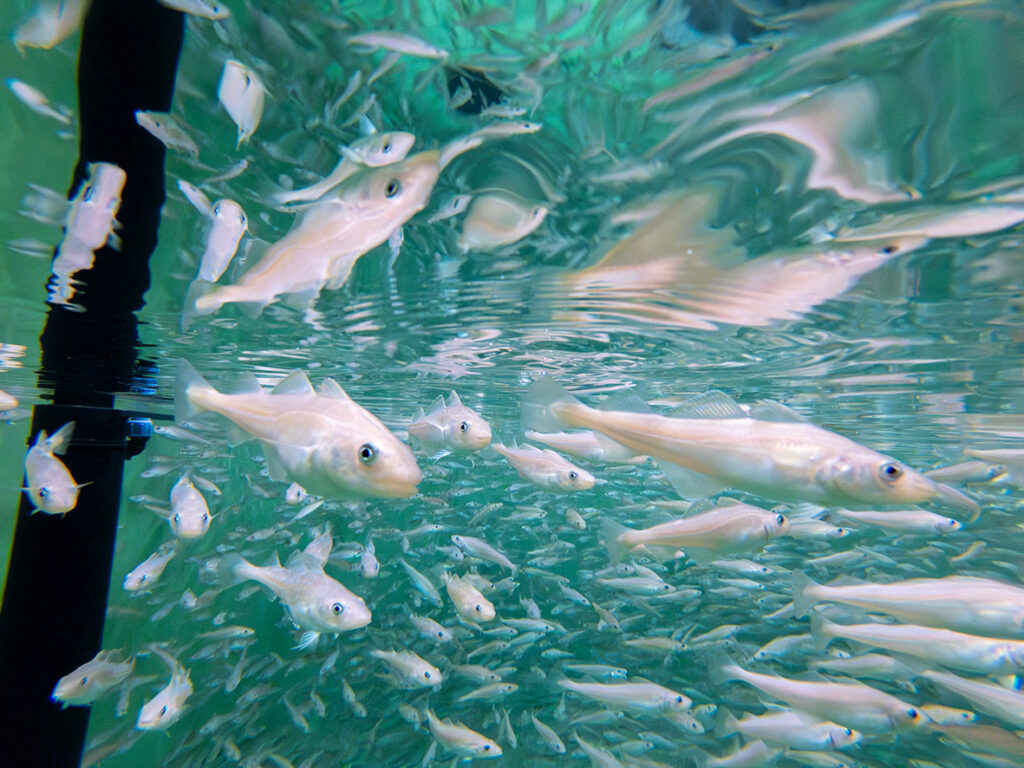
News & Views
Breeding
Fish Health
Genetics Week
Research
Nofima’s breeding program shows reduced spawning in farmed cod
November 1, 2023 By Hatchery International staff
 Sixth-generation farmed cod spawn fewer times than the previous generations. (Photo: Lars Åke Andersen © Nofima)
Sixth-generation farmed cod spawn fewer times than the previous generations. (Photo: Lars Åke Andersen © Nofima) A study by Nofima Institute indicates that farmed cod can spawn fewer times when they’re bred for growth. In the past, farmed cod in the Norwegian breeding program could spawn three times before reaching harvest weight but after being selected for growth, they spawn once.
Spawning is not a desired trait in fish farming because it means reduced growth for the farmer and there may be a risk of spreading fertilized eggs in the sea cross with wild fish in the following generation.
Many cod attain sexual maturity (which affects fast growth) prematurely if light cycles are not manipulated but, in the industry, development is controlled with light.
Nofima – also known as the Norwegian Institute of Food, Fisheries and Aquaculture Research – says that although it is a prerequisite that cod spawn in a breeding program, it is not desired in commercial farming. “Therefore, Nofima wants to put an end to early sexual maturation,” a press release from the company reads.
The research institute runs the national breeding program for cod and supplies fertilized eggs to cod farmers; for six generations, their breeding goal has mainly been growth.

Nofima breeding scientist, Anne Kettunen (Photo: Nofima)
Nofima breeding scientist, Anne Kettunen, led a trial where she tested the extent of early sexual maturation on over 100 full-sibling families in net pens in Nordland. The study showed that 84 per cent of females and 91 per cent of males reached sexual maturity at two years when they were not managed with light. Calculations show a genetic variation in early sexual maturation in cod. Thirty-three per cent of the trait depends on genes and the rest on the environment.
“This means that it is possible to breed for lower frequency of early sexual maturation, and thus further reduce the risk of spawning in net-pens. In Nofima’s breeding work, we are looking for several solutions, where breeding is one of them. Of course, production management at the fish farms is also part of the solution,” says Kettunen.
This article is part of the Genetics Week
Print this page
Advertisement
- Top 10 Under 40: Ezra Byakora
- Benchmark Norway bolsters genetics program with new broodstock licenses





